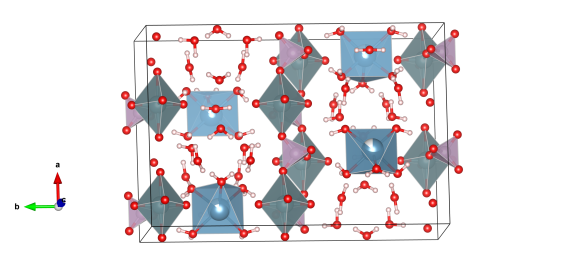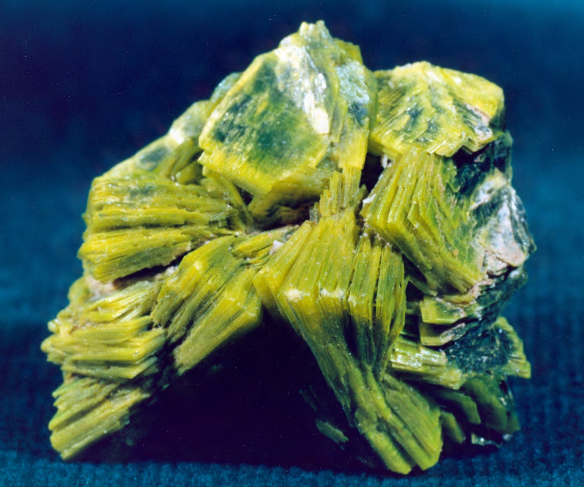A more complicated powering mineral – Autunite
What does it look like?

The grey atoms are uranium, the lilac are phosphorus atoms, the light blue are calcium atoms and the red are oxygen. Image generated by the VESTA (Visualisation for Electronic and STructural analysis) software http://jp-minerals.org/vesta/en/
What is it?
Autunite is a secondary uranium ore mineral, in that it has altered from the primary ore uraninite that we featured yesterday. Though much of the uranium in the earth is in the mineral form of uraninite, it does alter over geological time to more complicated minerals like autunite.

Autunite, Washington. Bureau of Mines, Mineral Specimens C1621.
Discovered in France in 1852, it is a green mineral that contains calcium and phosphorus as well as lots of water. It is also fluorescent, like Andersonite, which we have blogged about already. As Autunite is a hydrated mineral, so simply drying it out increases the proportion of uranium it contains.
Where did the structure come from?
Autunite is #9002888 in the Crystallography Open Database.






